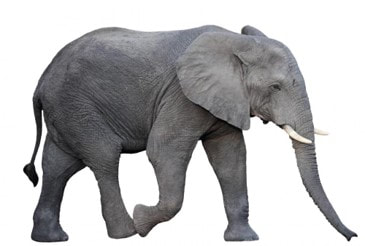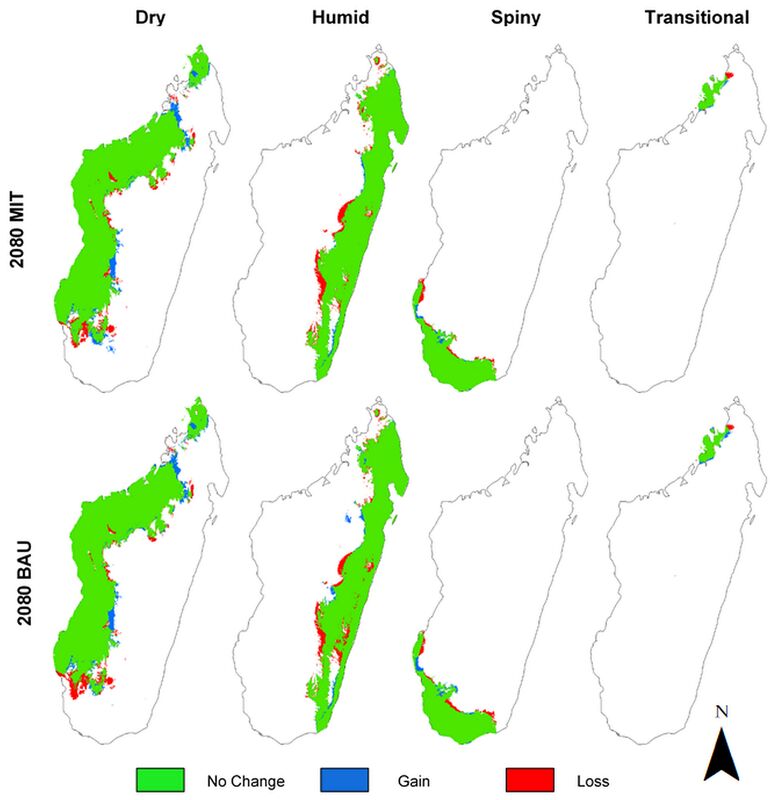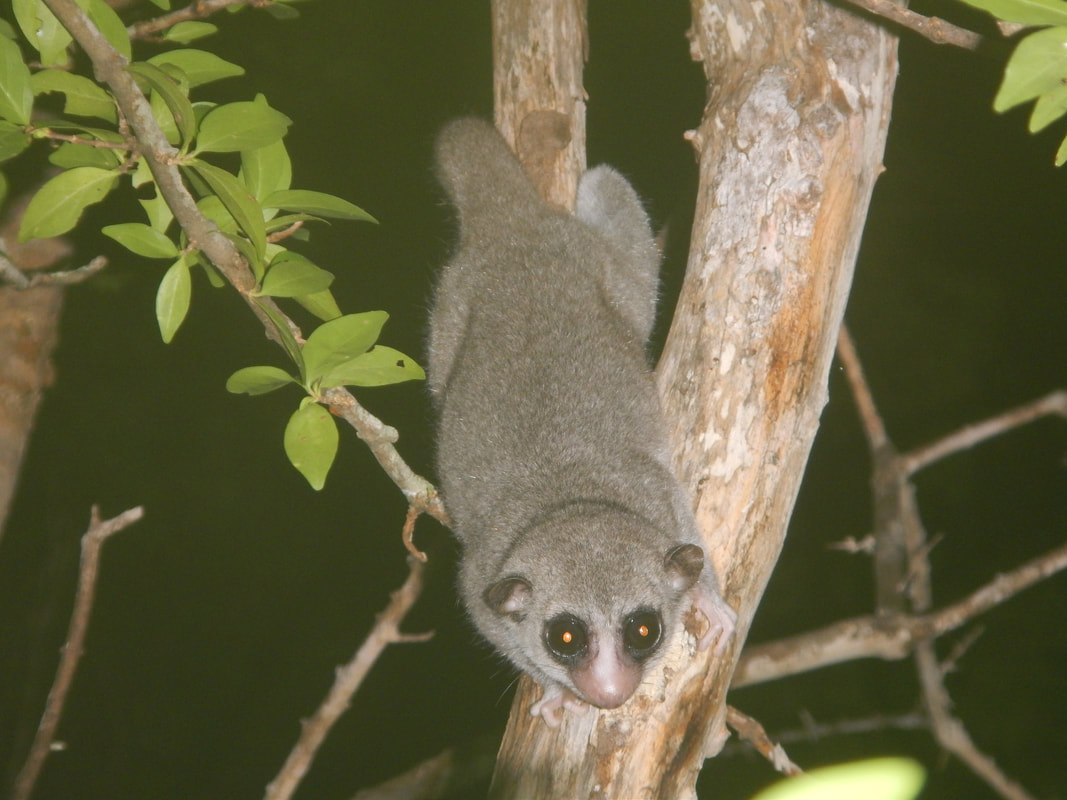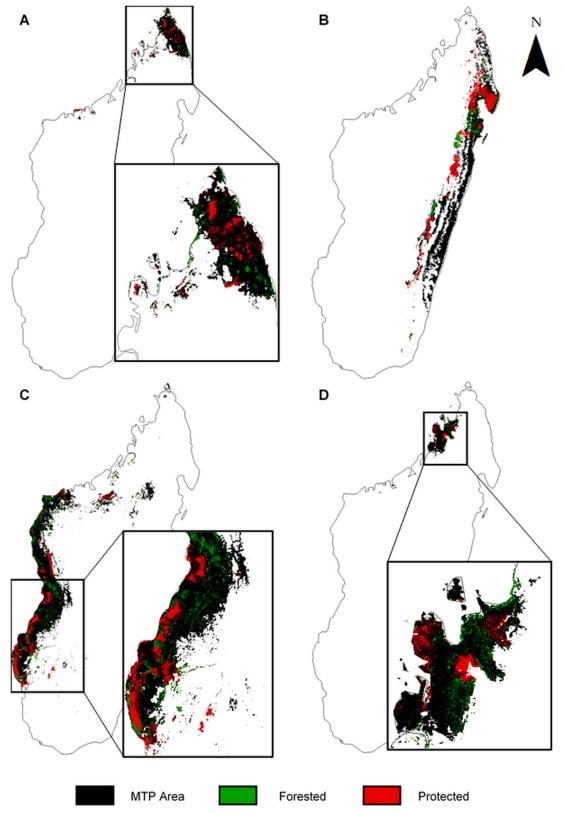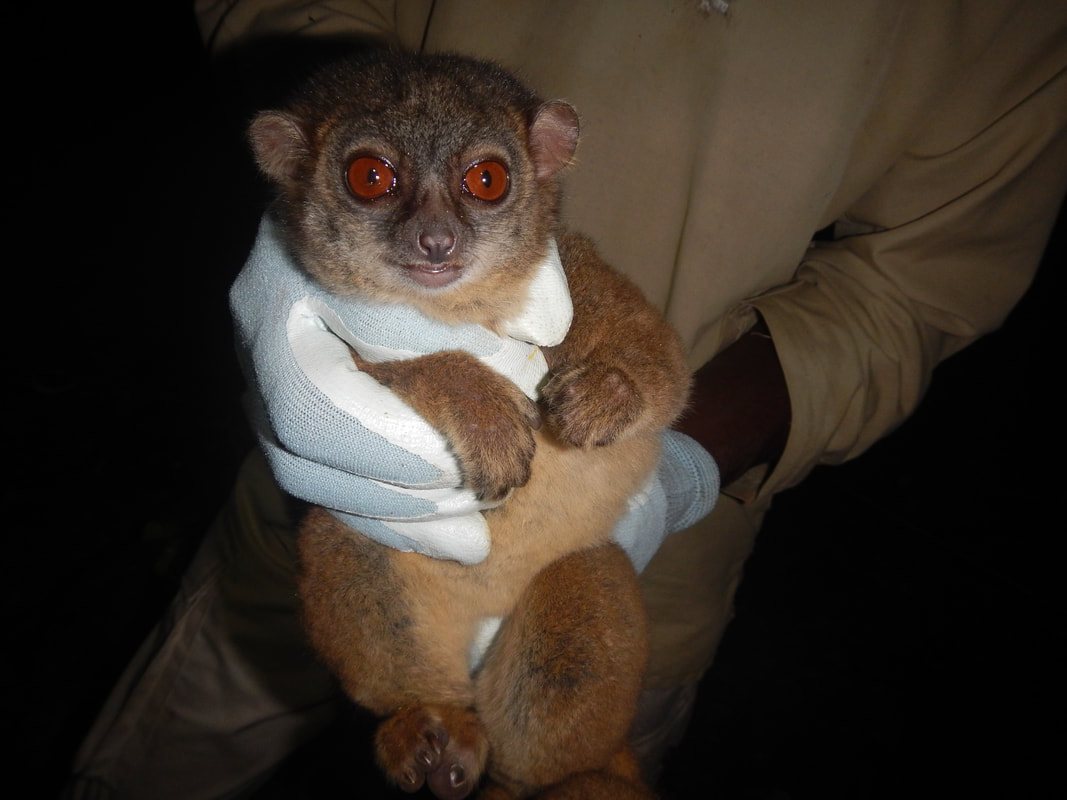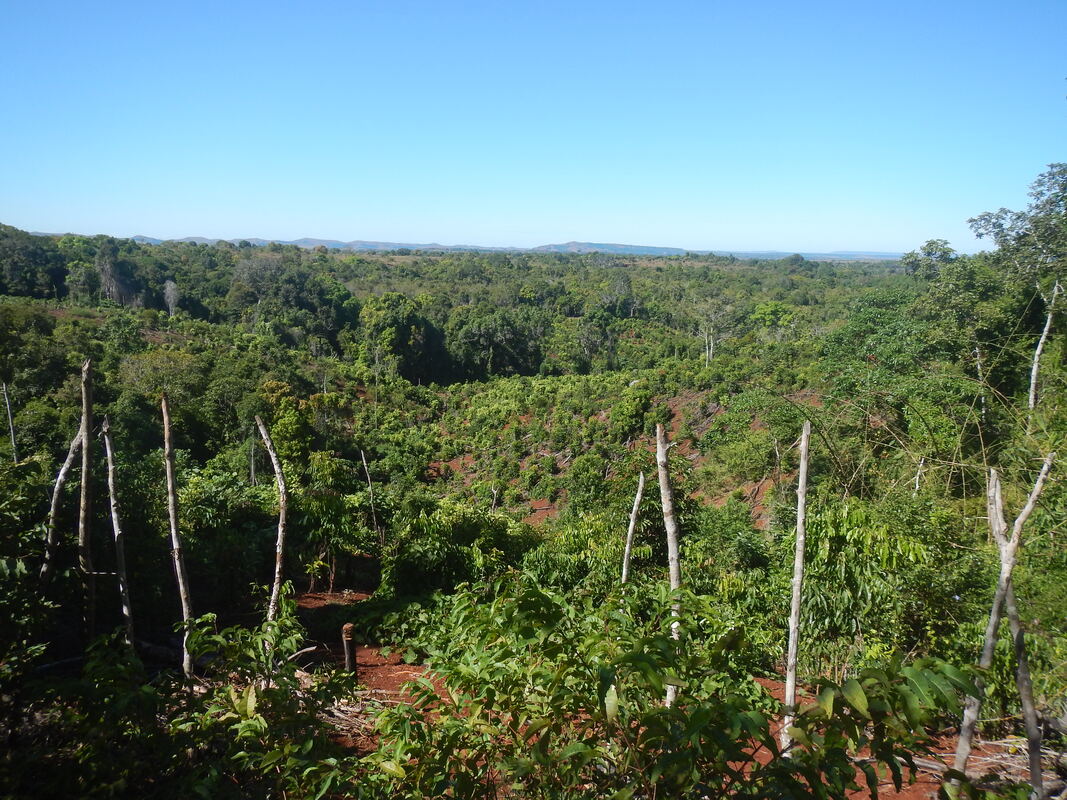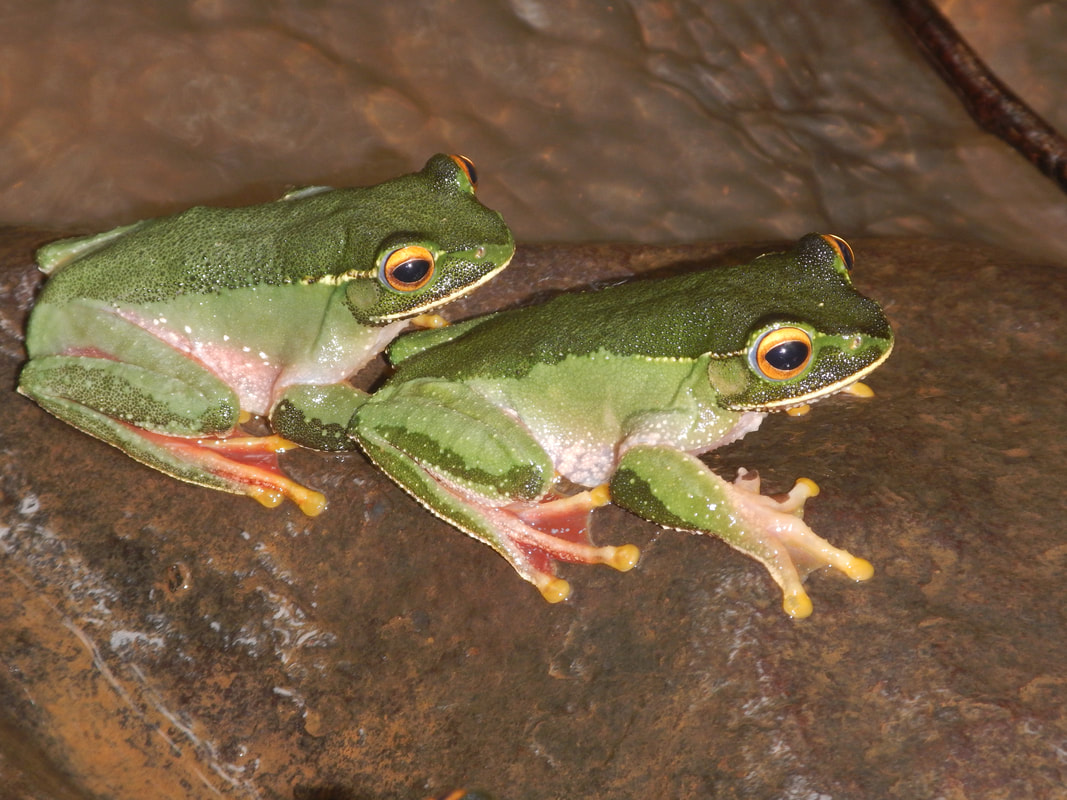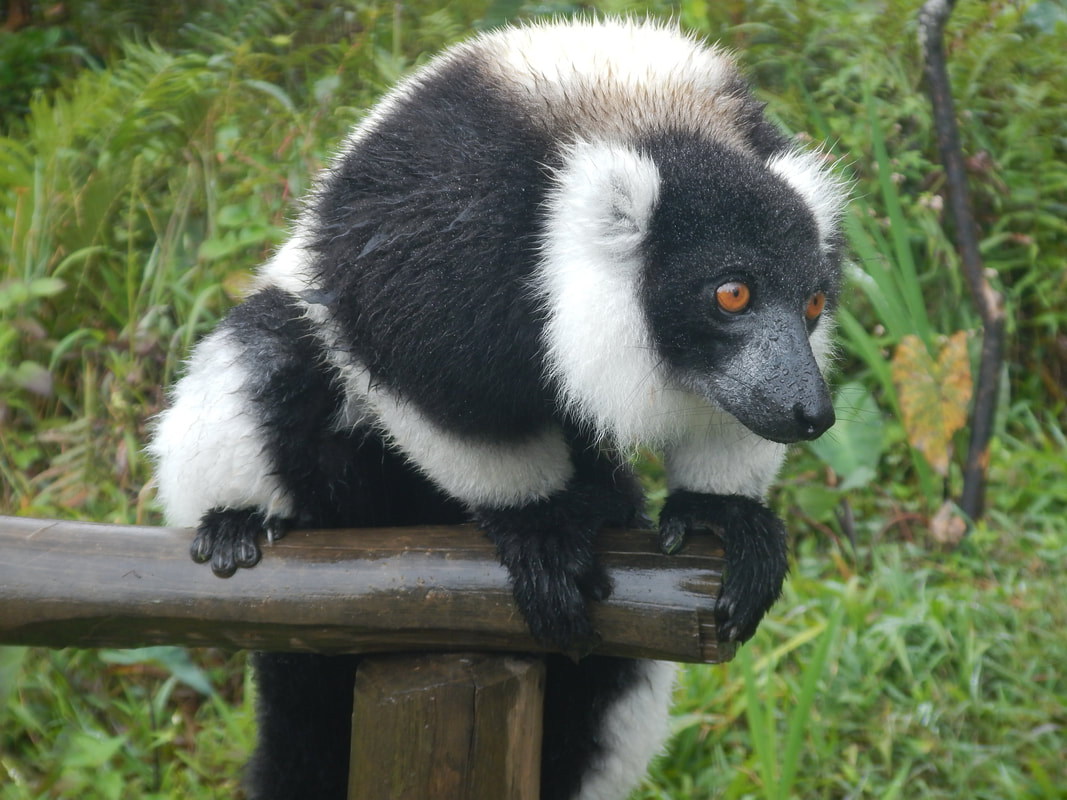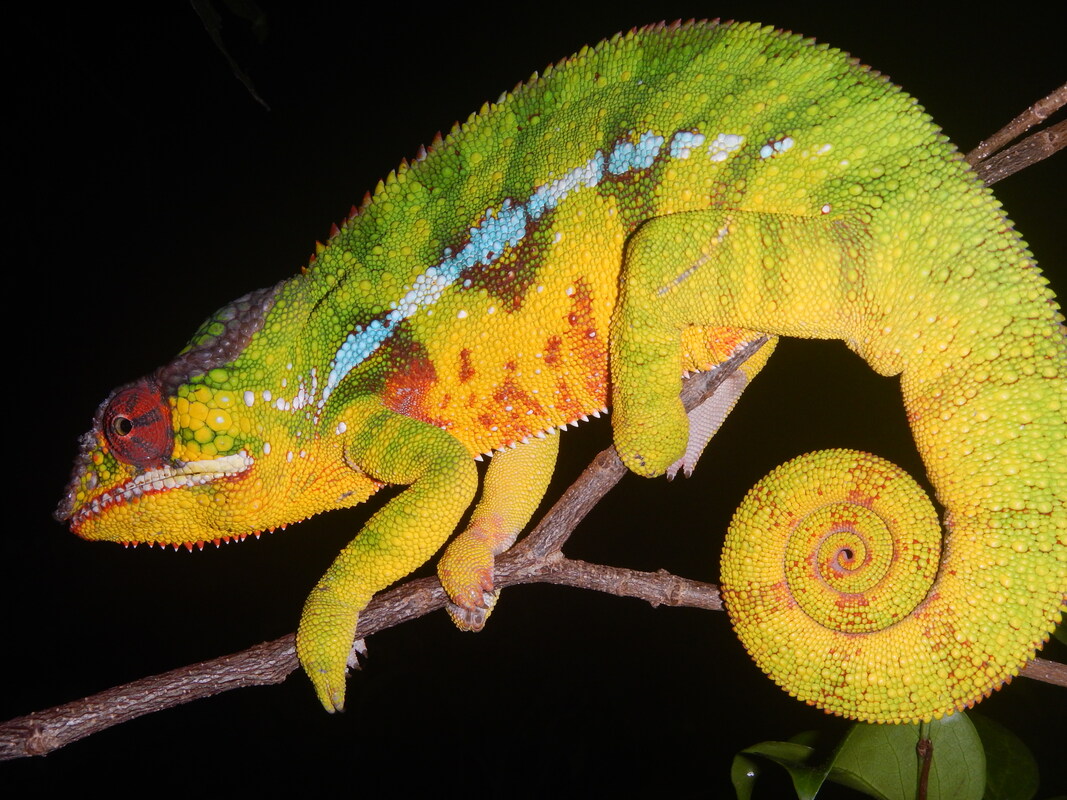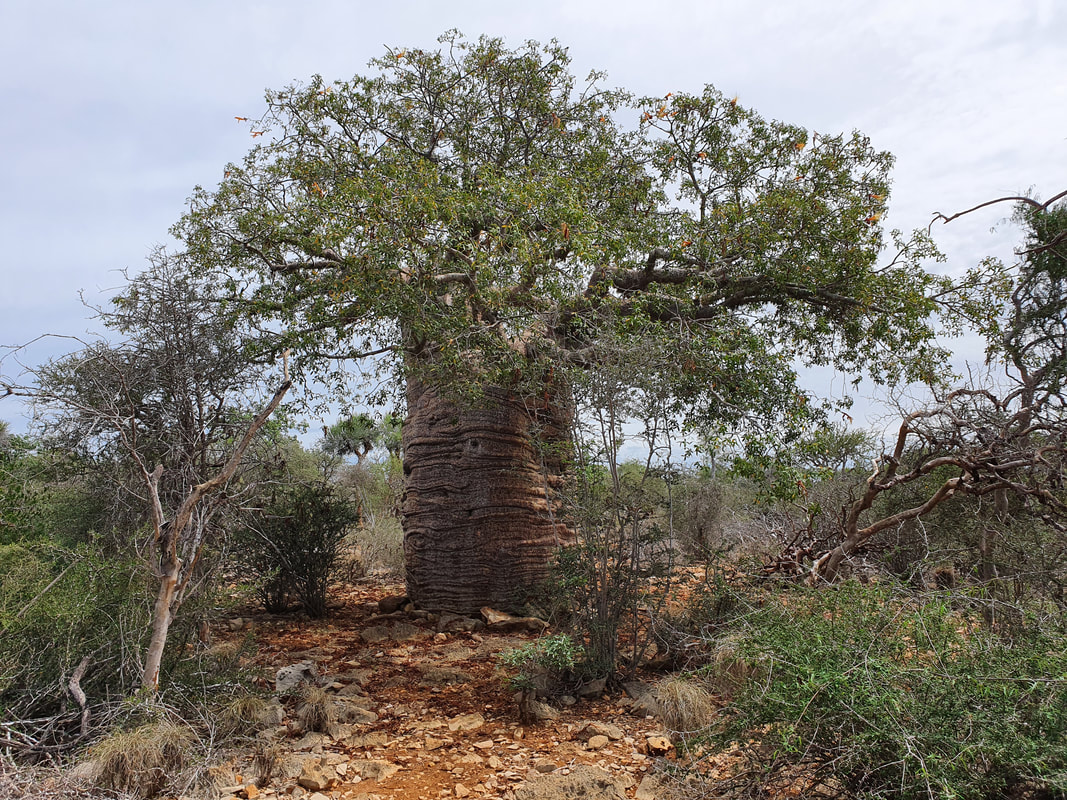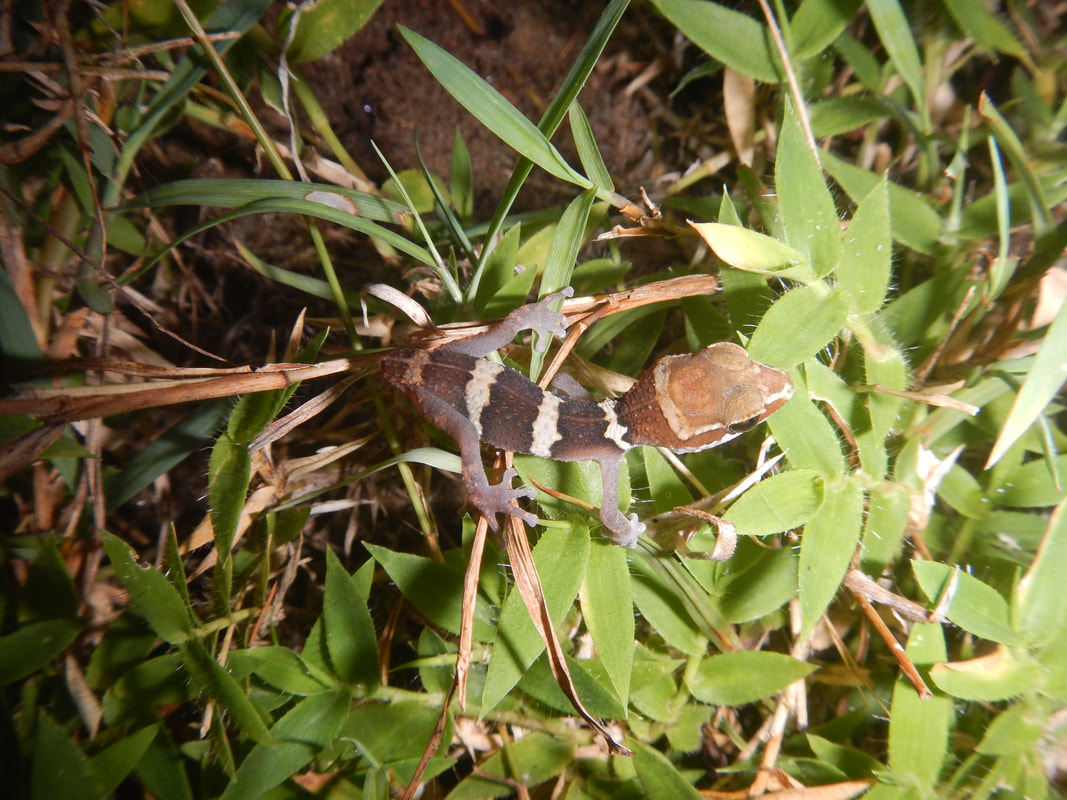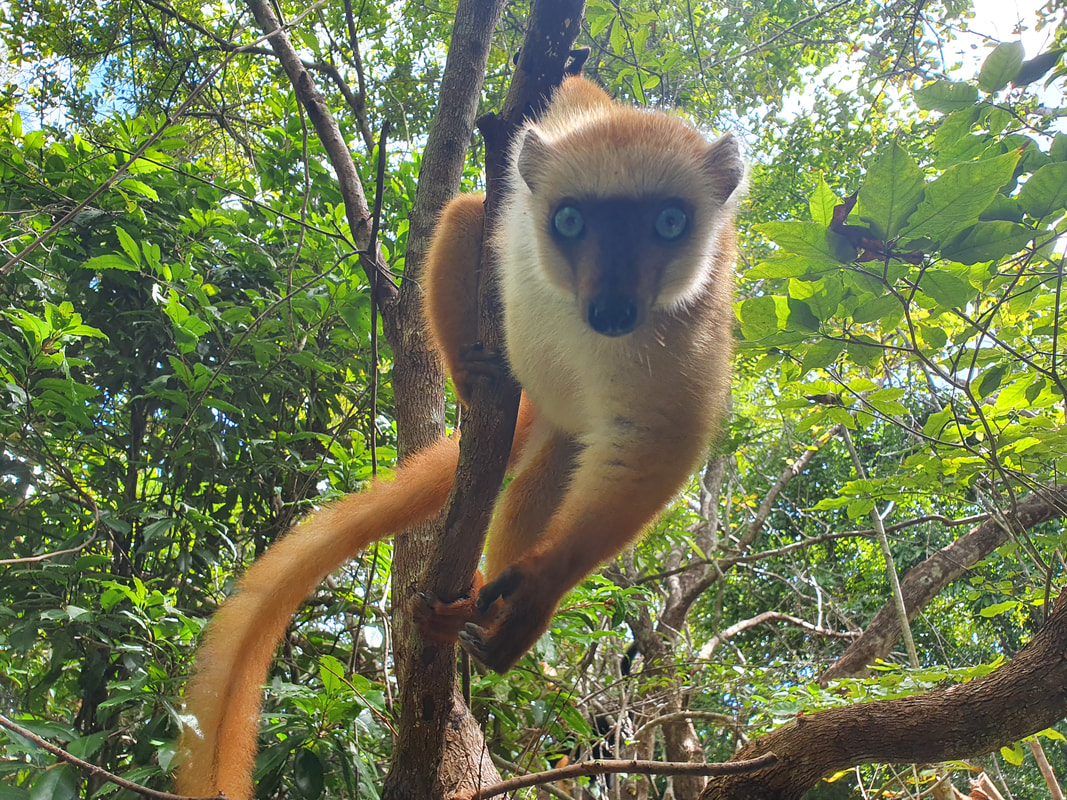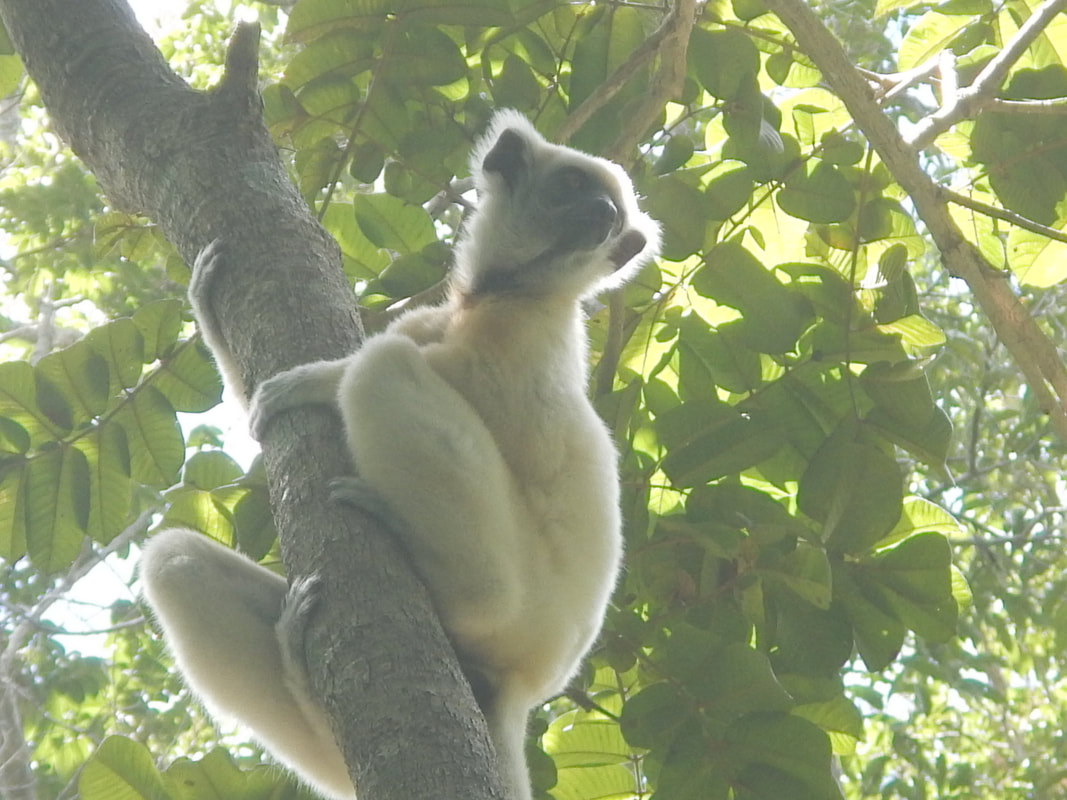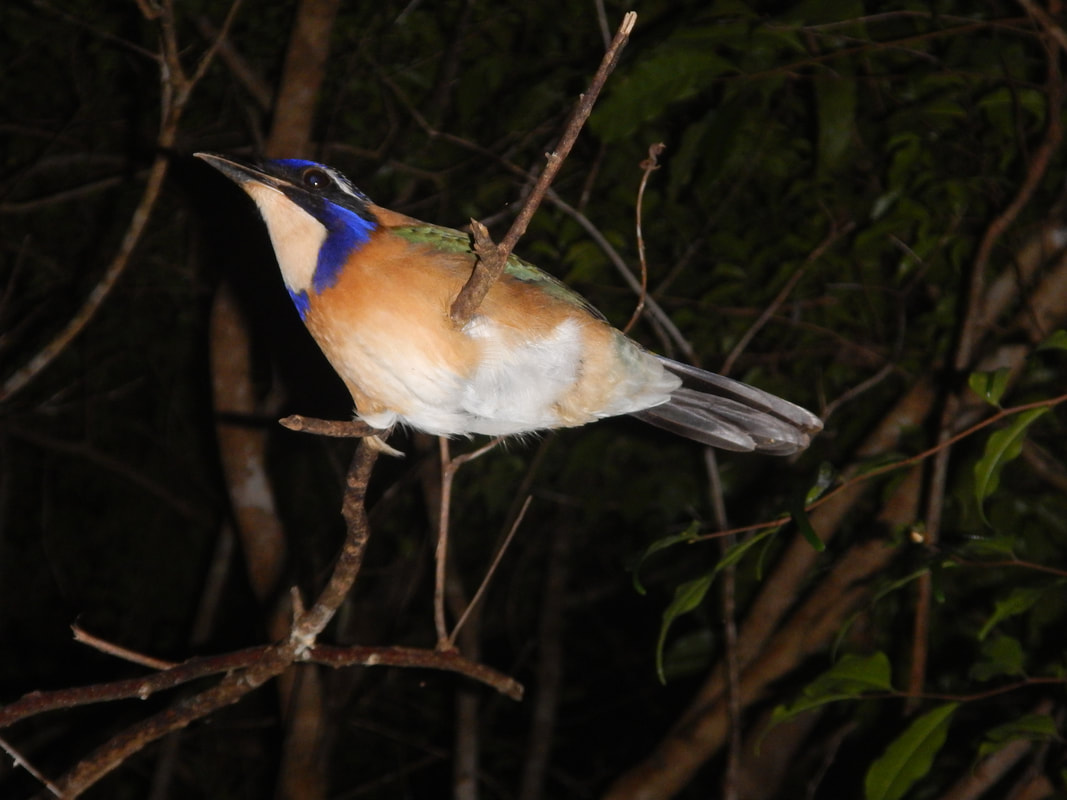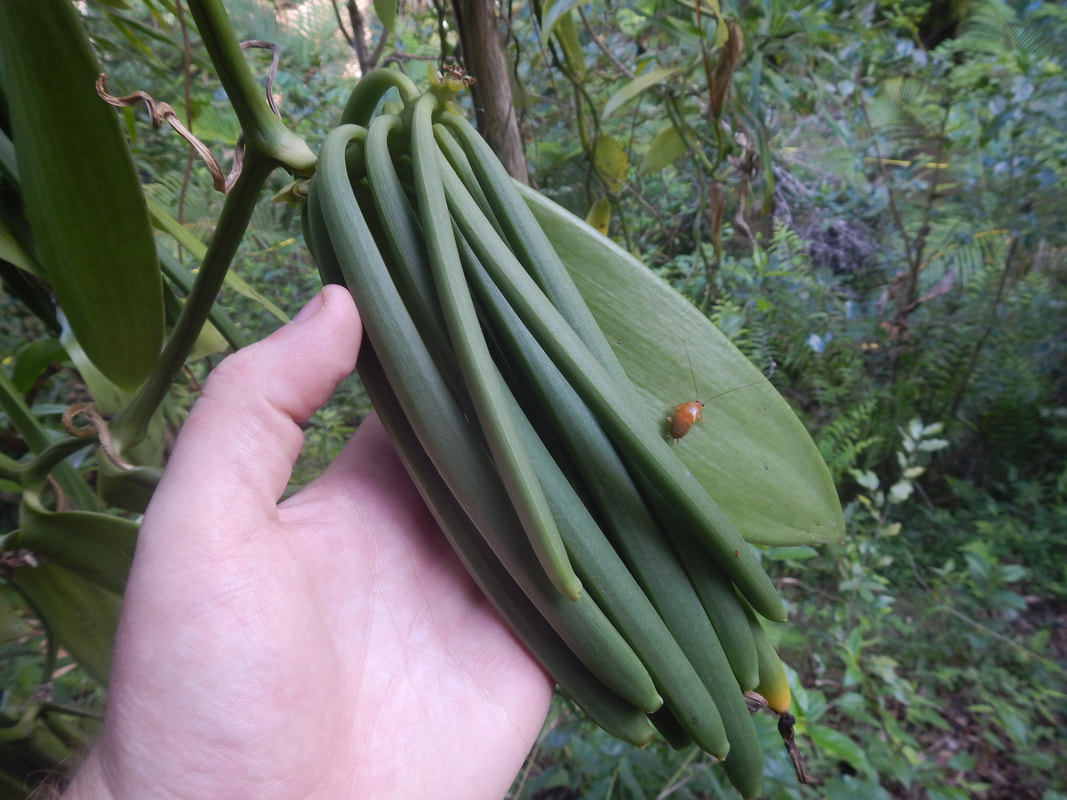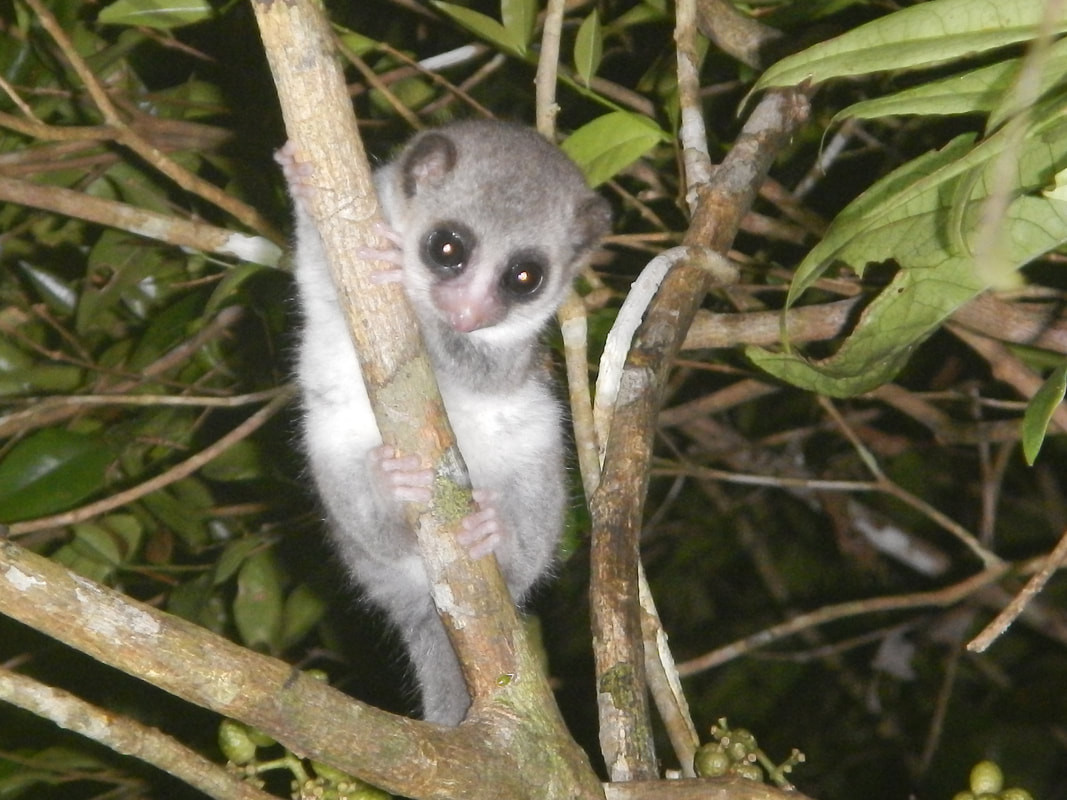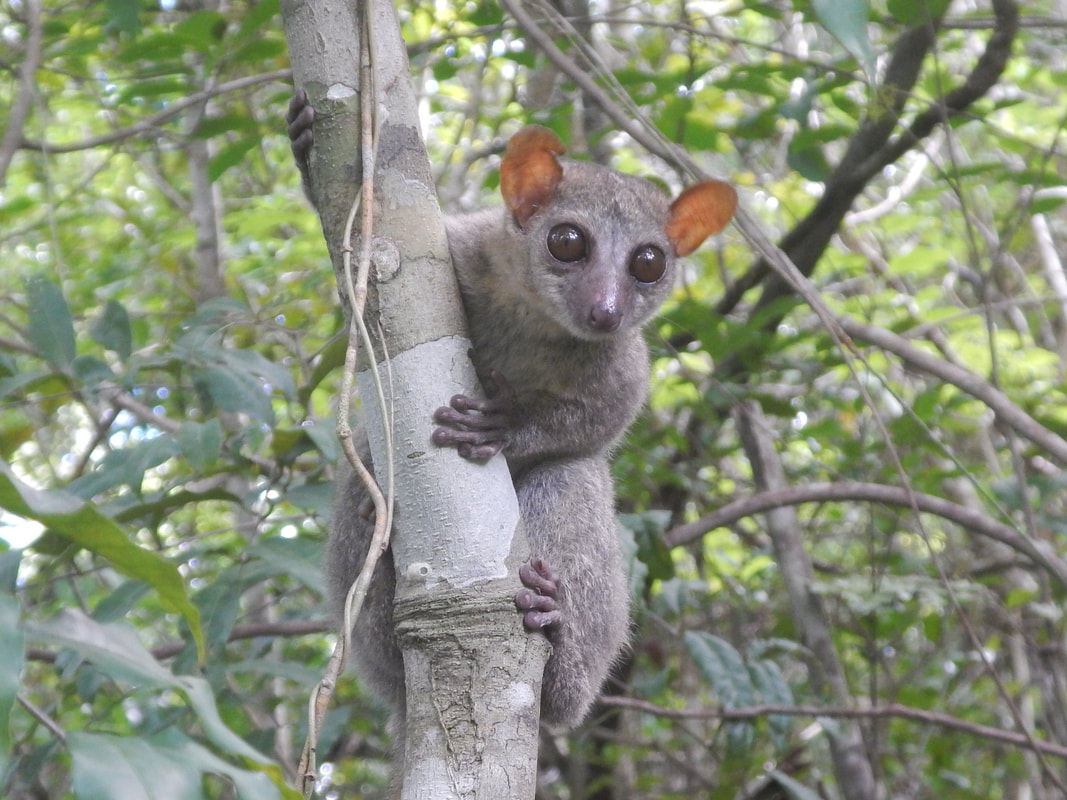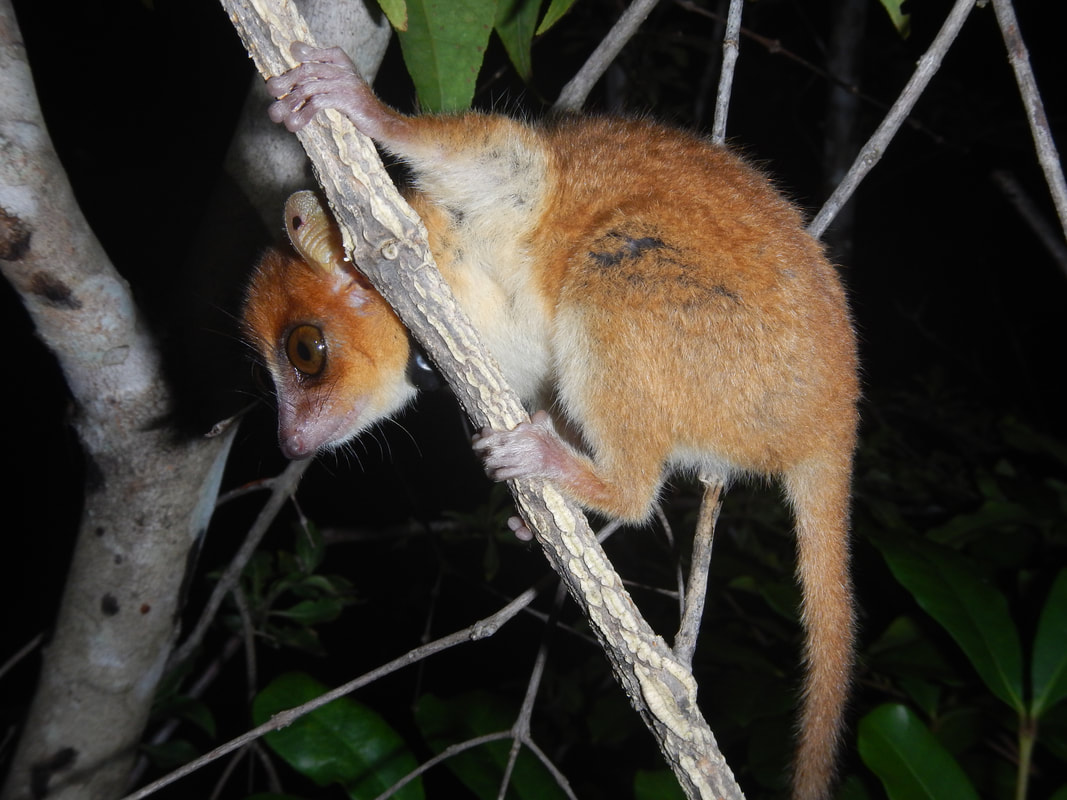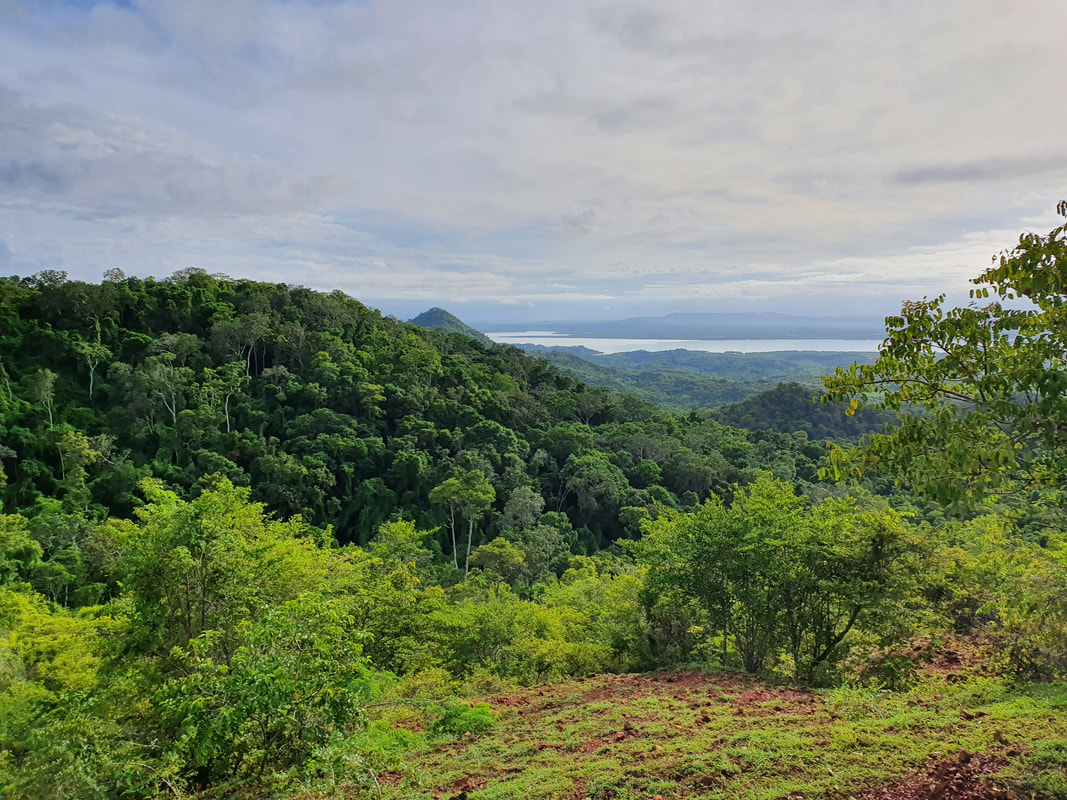Research Projects
Below is a summary of some of the research projects (past and ongoing) that I have either led or participated/collaborated on:
Seismic Communication of African Elephants at Mpala, Kenya
|
This project is investigating how and why African Elephants (Loxodonta africana) use seismic communication, with the specific objectives to:
|
Climate Change in Madagascar
Conservation Biogeography of the Cheirogaleidae
Effects of Forest Fragmentation on Lemurs in the Sahamalaza-Iles Radama National Park, North West Madagascar
|
|
Over 85% of Madagascar’s original forest cover has already been cleared, of which approximately 45% is estimated to have been cleared in the last 60 years alone. There is now great concern for Madagascar’s endemic wildlife populations, of which 90% depend on forest habitat for survival. Nocturnal lemurs are particularly threatened by this wide-scale habitat loss and fragmentation because they are small-bodied, and it is therefore highly risky for them to attempt to cross the large open spaces between forest fragments. An understanding of the effects of habitat fragmentation and degradation (and its associated edge-effects) on the population dynamics and behaviour of nocturnal lemurs is urgently needed to guide effective conservation action, or their future survival has a poor prognosis.
This ongoing project, co-led by the University of Bristol and Bristol Zoological Society, aims to address this issue by assessing the spatial, behavioural, and physiological responses of four species of nocturnal lemurs to habitat fragmentation and edge-effects within two forested areas of the Sahamalaza-Iles Radama National Park, Madagascar. The study-species are the Northern Giant Mouse Lemur (Mirza zaza), the Sahamalaza Sportive lemur (Lepilemur sahamalaza), the Sambirano Mouse lemur (Microcebus sambiranensis), and the Fat-tailed Dwarf Lemur (Cheirogaleus medius). Data on lemur population densities, behaviour, diet, and physiological health were collected from 2019 until 2022, and are now currently being compared between continuous and fragmented forest, and between forest core and forest edge areas to gauge the habitat requirements of the lemurs, and to determine their behavioural flexibility and plasticity to habitat degradation. Upon completion of this project, results will be shared with the collaborating NGOs Mikajy Natiora and the AEECL to facilitate their long-term reforestation efforts within the Sahamalaza-Iles Radama National Park, and their species-specific lemur conservation action plans. This project will also provide a baseline for long-term monitoring of lemur populations and habitat availability within the National Park. |
Biodiversity Assessments
Since undertaking my first field-based project in 2014, my scientific research has taken me to many different locations throughout the tropics. Many of these locations are remote and difficult to access, and resultantly, few scientific studies have been undertaken at these localities. Whilst my visits to these sites are primarily to answer research questions surrounding a specific project, a personal objective for me has always been to gather as much information on the natural history of these little-known sites as possible, and to provide the first reports of which species occupy them. In order to accomplish this, I use a range of active surveying and passive remote-sensing techniques to locate, detect, and identify as many species, both floral and faunal, at the site as possible. Such data are vitally important to 1) understand and track the distribution of threatened species, 2) determine the importance of specific locations for species conservation, and 3) to plan and implement habitat restoration initiatives and species conservation action plans.
The photos below showcase some of the most beautiful and striking species that I have been fortunate enough to encounter in the wild.
The photos below showcase some of the most beautiful and striking species that I have been fortunate enough to encounter in the wild.
Vanilla Agroforestry and its Effects on Native Species in the SAVA Region, North East Madagascar
|
|
The SAVA Region of North East Madagascar is the world’s primary vanilla-cultivation area. Throughout the region, vanilla plantations have replaced pre-existing natural forests, and the landscape is now dominated by a matrix of vanilla agroforests, anthropogenic grassland, and isolated natural forest fragments. Prior to this project, little was known about which organisms inhabit Madagascar’s vanilla plantations, and nothing was known of the potential value of vanilla agroforests for biodiversity and conservation.
In 2017, I worked with a team assembled by Bristol Zoological Society to rapidly assess floral and faunal species richness within the SAVA Region’s vanilla plantations using a multifaceted and multi-method approach. As vanilla plantations are managed under varying regimes, we surveyed biodiversity within three different types of vanilla plantation:
The results of this study were highly encouraging, as we found that many species (lemurs, bats, birds, reptiles, amphibians) inhabit or travel through vanilla agroecosystems. Most notably, we were able to confirm the presence of five different lemur species within the SAVA Region's vanilla plantations, and also the Critically Endangered gecko species Paroedura lohatsara. However, we found that natural forest habitat contained the greatest floral and faunal species diversity, and had proportionally more threatened and endemic species than all types of plantation. We observed greater biodiversity in eco-plantations in comparison to intensively-managed plantations, and biodiversity was always higher in plantations located within close proximity to natural forests in comparison to those that were further away. We believe these findings to be highly important and encouraging for animal conservation and sustainable crop cultivation in the SAVA Region and Madagascar more-generally, and our results suggest that vanilla cultivation regimes should endeavour to follow the traditional, minimalistic-management approach to improve sustainability and promote higher faunal diversity. |
Primate Vocal Communication
|
Knowledge of a species’ vocal repertoire is an essential component of the interpretation of its behaviour and sociality. For cryptic nocturnal primates, vocalisations are also an important and valuable tool for species identification (particularly among sympatric species), sex/group discrimination, and non-invasive field identification, monitoring, and conservation efforts.
Since 2016, I have been collaborating with several researchers to characterise and describe the loud calls and vocal repertoires of cryptic primates, so that these species can be acoustically detected, identified, and studied in their natural forest habitats. Some of these studies have been conducted on captive populations, whilst other vocal repertoires have been described for wild populations. |
Behavioural Ecology of the Sambirano Mouse Lemur in North West Madagascar
|
|
The Sambirano Mouse Lemur (Microcebus sambiranensis) is a small, Endangered nocturnal primate endemic to only a few small, fragmented forests within the Sambirano Domain of North West Madagascar. Prior to this research it was completely unstudied and nothing was known of its behavioural ecology or habitat requirements, despite it being highly threatened by habitat destruction and forest fragmentation.
In this the first ever research project that I led, I investigated aspects of the ecology and vocal behaviour of M. sambiranensis to obtain a baseline understanding of the species’ behaviour, from which the first conservation action plan for this species could be established. I collected field data over a period of four months in 2015 in the Anabohazo Forest, Sahamalaza-Iles Radama National Park, focusing on a radio-collared study population of eight individuals. I followed the lemurs throughout the night to obtain data on their movements and ranging ecology, and I recorded any vocalisations that I observed. In parallel, I also located and characterised their sleeping sites during the day, and I conducted an acoustic survey of the forest to determine habitat use of this species. I was able to determine the home range sizes and daily travel routes of the radio-collared individuals, and I discovered that this species depends primarily on vegetation tangles of specific tree species for their sleeping sites. I was also able to characterise five distinct vocalisation types for M. sambiranensis, which I then cross-referenced with my acoustic survey data; my acoustic surveys revealed that M. sambiranensis was absent from areas of primary forest, and only occurred in secondary and edge-habitat. The results from this study suggest that M. sambiranensis may be somewhat resilient to habitat degradation, but its distribution may be limited by forest presence, and the availability of suitable sleeping sites. |
Nature-based Solutions in Tropical Agroforestry Landscapes
Ⓒ Daniel Hending
